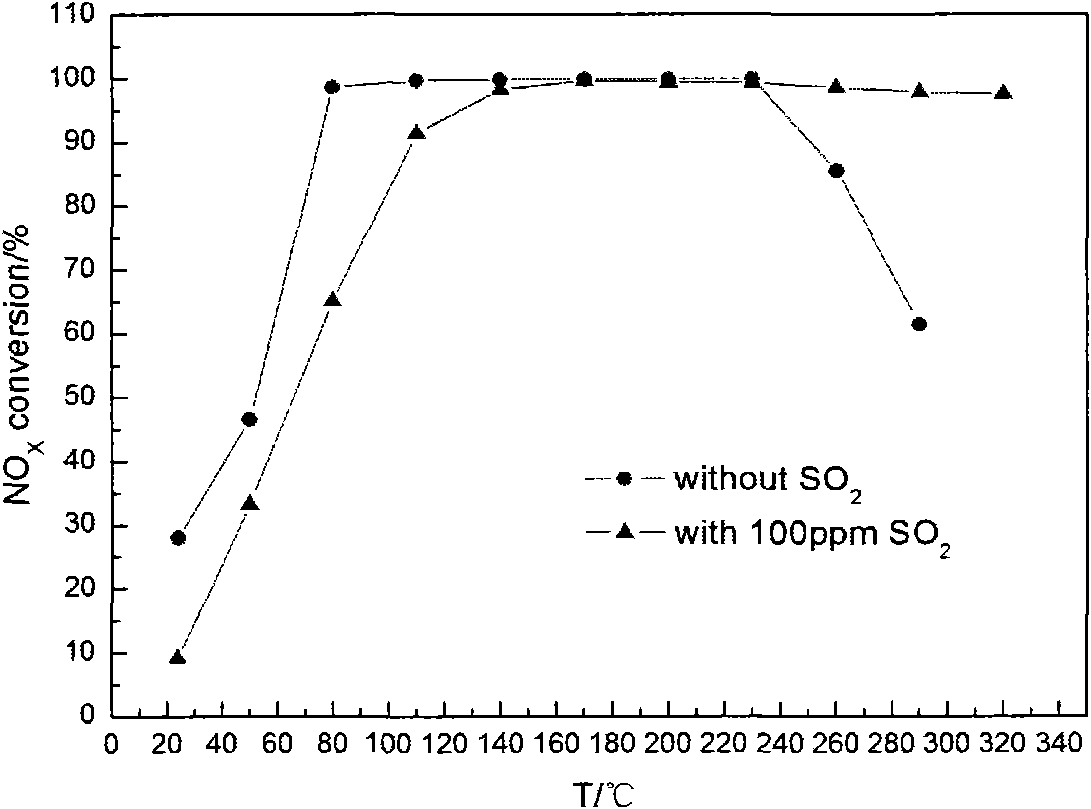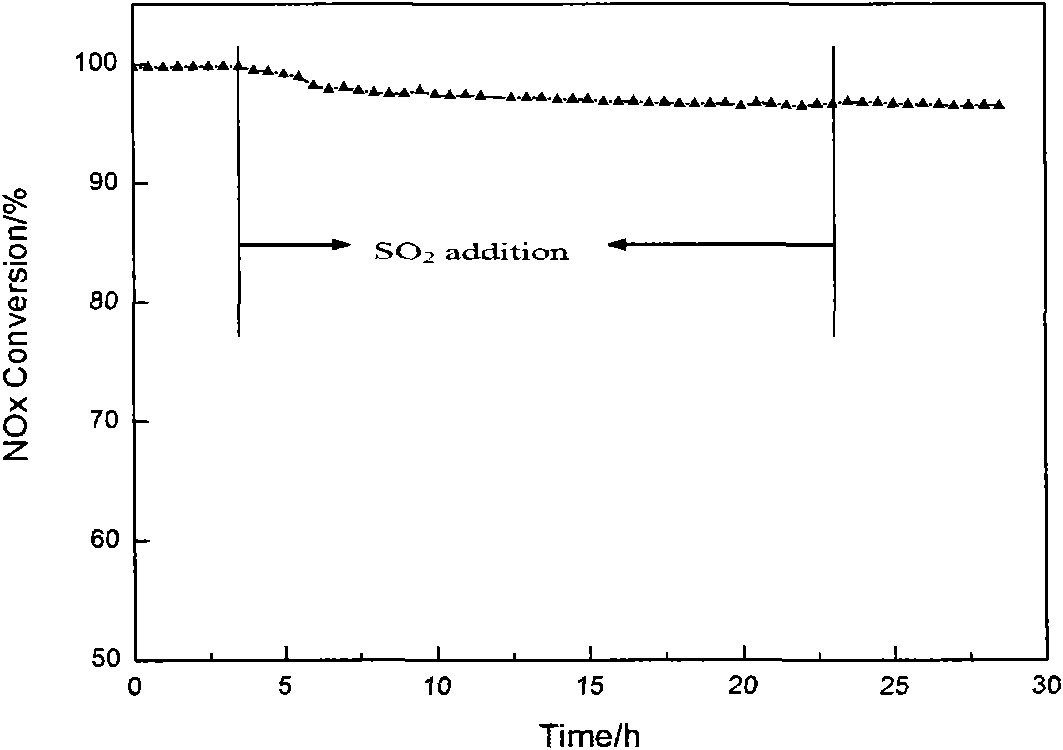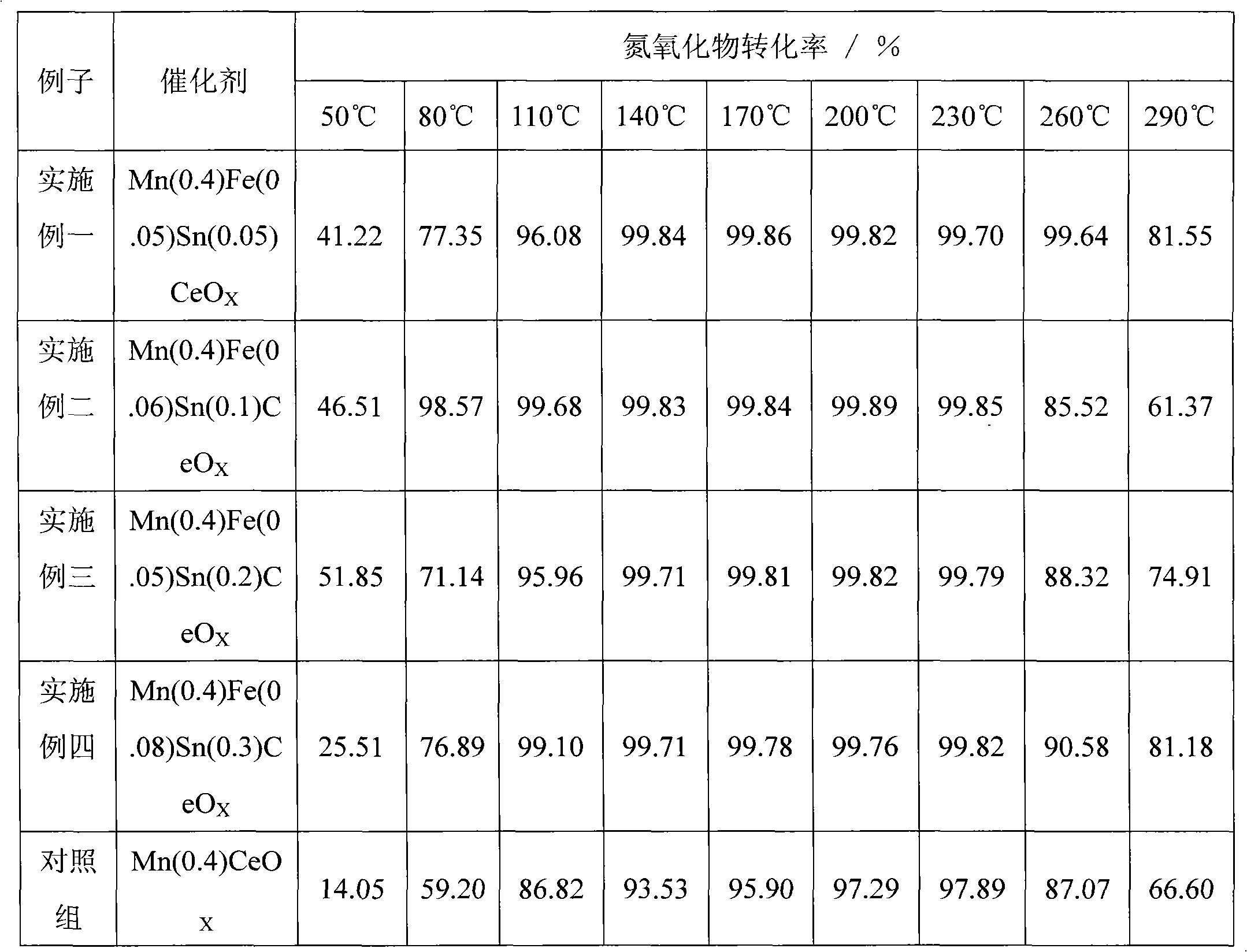Manganese-based low-temperature denitration catalyst and preparation method thereof
A low-temperature denitration and catalyst technology, applied in chemical instruments and methods, physical/chemical process catalysts, separation methods, etc., can solve the problems of human and environmental pollution, catalyst poisoning, high fly ash content, and achieve good sulfur resistance.
- Summary
- Abstract
- Description
- Claims
- Application Information
AI Technical Summary
Problems solved by technology
Method used
Image
Examples
Embodiment 1
[0015] A manganese-based low-temperature denitrification catalyst, the raw material components of which are: manganese nitrate with a content of 40% of the molar percentage of the catalyst, iron nitrate with a content of 5% of the molar percentage of the catalyst, and a content of 5% of the molar percentage of the catalyst 5% crystalline tin tetrachloride, the balance being cerium nitrate.
[0016] A method for preparing a manganese-based low-temperature denitration catalyst, comprising the following steps:
[0017] Step 1. Dissolve manganese nitrate, ferric nitrate, crystalline tin tetrachloride and cerium nitrate in 100 times molar water at room temperature, and stir to form a transparent solution, wherein the content of manganese nitrate is 40% of the molar percentage of the catalyst, and the content of ferric nitrate Ferric nitrate which is 5% of the molar percentage of the catalyst, the content of crystalline tin tetrachloride is 5% of the molar percentage of the catalyst...
Embodiment 2
[0024] A manganese-based low-temperature denitrification catalyst, the raw material components of which are: manganese nitrate with a content of 40% of the molar percentage of the catalyst, iron nitrate with a content of 6% of the molar percentage of the catalyst, and a content of 6% of the molar percentage of the catalyst 10% crystalline tin tetrachloride, the balance being cerium nitrate.
[0025] A method for preparing a manganese-based low-temperature denitration catalyst, comprising the following steps:
[0026] Step 1. Dissolve manganese nitrate, ferric nitrate, crystalline tin tetrachloride and cerium nitrate in water of 110 times molar weight at room temperature, and stir to form a transparent solution, wherein the content of manganese nitrate is 40% of the molar percentage of the catalyst, and the content of ferric nitrate Ferric nitrate which is 6% of the molar percentage of the catalyst, the content of crystalline tin tetrachloride is 10% of the molar percentage of ...
Embodiment 3
[0038] A manganese-based low-temperature denitrification catalyst, the raw material components of which are: manganese nitrate with a content of 40% of the molar percentage of the catalyst, iron nitrate with a content of 5% of the molar percentage of the catalyst, and a content of 5% of the molar percentage of the catalyst 20% crystalline tin tetrachloride, the balance being cerium nitrate.
[0039] A method for preparing a manganese-based low-temperature denitration catalyst, comprising the following steps:
[0040] Step 1. Dissolve manganese nitrate, ferric nitrate, crystalline tin tetrachloride and cerium nitrate in water of 115 times the molar weight at room temperature, and stir to form a transparent solution, wherein the content of manganese nitrate is 40% of the molar percentage of the catalyst, and the content of ferric nitrate Ferric nitrate which is 5% of the molar percentage of the catalyst, the content of crystalline tin tetrachloride is 20% of the molar percentage...
PUM
 Login to View More
Login to View More Abstract
Description
Claims
Application Information
 Login to View More
Login to View More - R&D
- Intellectual Property
- Life Sciences
- Materials
- Tech Scout
- Unparalleled Data Quality
- Higher Quality Content
- 60% Fewer Hallucinations
Browse by: Latest US Patents, China's latest patents, Technical Efficacy Thesaurus, Application Domain, Technology Topic, Popular Technical Reports.
© 2025 PatSnap. All rights reserved.Legal|Privacy policy|Modern Slavery Act Transparency Statement|Sitemap|About US| Contact US: help@patsnap.com



